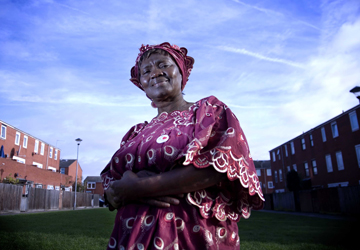
Africans were brought to London in the late 16th century because of Britain’s role in the slave trade. By the mid-18th century, the capital had a significant free Black population. Fewer Black people came to London after slavery had been abolished throughout the British Empire in 1833, and the community declined during the 19th century.
From the beginning of Queen Victoria’s reign until the end of the Second World War, the British Empire was at its height. Large parts of Africa fell under British rule and people from these lands became British subjects who were able to enter Britain freely. Some Africans came to London as visitors and students; others stayed permanently. Many of today’s Londoners can trace their ancestry directly to African countries.
During the 19th century, communities of ex-sailors developed around port areas. The Black sailor community was focused on Canning Town, where a Coloured Men’s Institute was established in 1926.
A number of prominent Black figures emerged in public life. Londoner Samuel Coleridge-Taylor was a notable composer around the turn of the century. John Archer pioneered African and Caribbean involvement in local politics when he became Mayor of Battersea in 1913.
In 1931 Dr Harold Moody founded the League of Coloured Peoples, the first Black pressure group. From the 1930s, West African students in London such as Jomo Kenyatta and Kwame Nkrumah were also influential. They were central figures in the African liberation struggles.
During the Second World War, West Africans served in the British forces in Europe and worked in munitions factories in Britain.
Like the rest of the country, London experienced a labour shortage during the years of reconstruction in the 1940s and 50s. The 1948 British Nationality Act gave British citizenship to all people living in commonwealth countries, and full rights of entry and settlement in Britain. Some migrants arrived from Nigeria and Ghana in West Africa to work in London.
The settlement of people with different languages, customs and skin colour fuelled the prejudices of others and led to calls to restrict immigration. The 1962 Commonwealth Immigrants Act greatly slowed non-European immigration.
From the 1980s, increased numbers of people migrated to London from West Africa. Today, populations from Nigeria, Sierra Leone and Ghana live in and around Southwark and Peckham in South London, where evangelical and Pentecostal churches have sprung up to cater to devout congregations drawn from these groups. Nearly 70% of Africans are Christians, while 20% are Muslims. West Africans also live in Dalston.
During the 1970s and 90s, Somalians and Ethiopians fled from civil war in East Africa. Migrants from Djibouti, Eritrea, Ethiopia and Sudan have settled in North Kensington. The total number of people resident in London who identified themselves as ‘Black or Black British: African’ in the 2001 census was over 380,000. Over three-quarters of Africans living in Britain live in London
